Gibson Les Paul is one of the most iconic guitars ever designed. It’s hard to imagine a guitar player that hasn’t dreamed of owning one. Although Gibson has made a lot of different guitars over the course of its rich history, Les Paul has become synonymous with the company. It’s hard to count all of the influential players that have made the Les Paul their go-to instrument. There’s Jimmy Page, Slash, Paul Kossoff, Duane Allman, Zakk Wylde, Joe Bonamassa, Peter Green, as well as Les Paul himself, and many more.
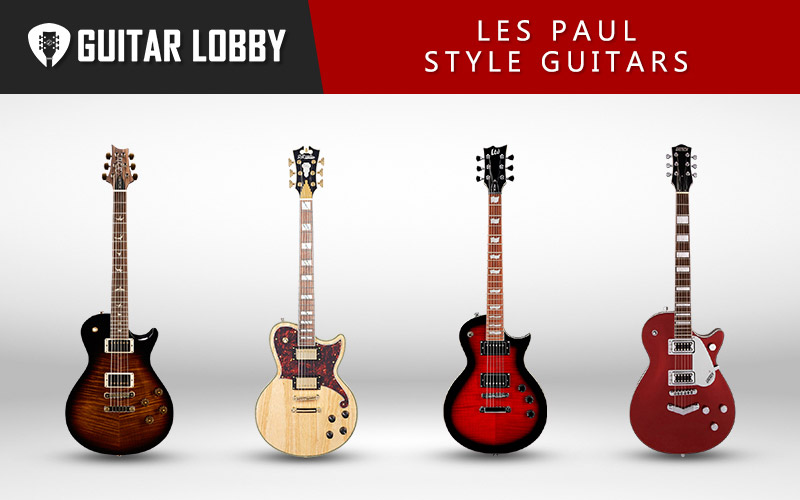
Gibson Les Paul, apart from its striking looks, also boasts a warm, full sound that has tons of sustain, making it ideal for anything from jazz and blues to heavier music genres, such as hard rock and heavy metal. It’s also made exclusively in the USA, which ensured the use of premium materials and superior build quality. However, all of that comes at a price, which is why your average player can’t afford one. Fortunately, there are plenty of great Les Paul style guitars, as well as Les Paul copies, which are a lot more affordable, but offer much of that familiar Les Paul sound and feel.
If you are in love with a Les Paul but are looking for an alternative to the Gibson brand, we’ve put together a list of the best Les Paul style guitars at each price point, as well as a buying guide at the bottom of the article explaining the brands and manufacturers. If you’re looking for a Les Paul copy this list will definitely help you out.
Here are the Best Les Paul Style Guitars and Copies
1. ESP LTD EC-256FM Electric Guitar (Best Value)
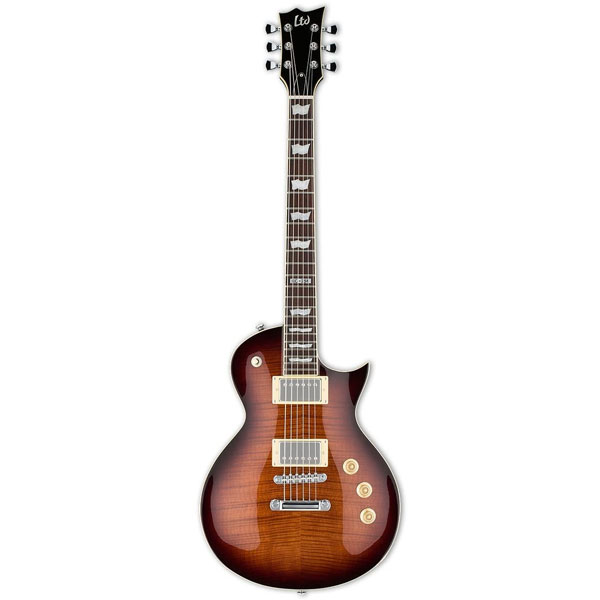
| Criteria | Rating (1-10) |
| Build Quality | 8.5 |
| Sound | 8 |
| Versatility | 7.5 |
| Ease of Use | 8.5 |
| Value | 9.5 |
| Overall | 8.4 |
Build Quality and Design
For its budget price tag, the ESP LTD EC-256FM brings impressive build quality to the table. It’s crafted with a mahogany body, topped with a flamed maple veneer, and is powered by a set-in 3-piece mahogany neck. The fingerboard is Jatoba, decorated with wavy trapezoid inlays. The body itself also looks more aggressive, thanks to the sharp outline. Note that this is the ‘FM’ version, and the standard model doesn’t have a flamed-maple top.
The guitar’s overall build feels sturdy, well-crafted, and I felt its weight is comparable to my Gibson Les Paul. Heavy, but feels good on your lap. The Thin-U contour neck also felt comfortable for shredding for my playing style.
The EC-256 comes in a range of colors, including Cobalt Blue, Dark Brown Sunburst (the one I reviewed), Vintage Natural, and See Thru Purple Sunburst, making it easy to choose your flavor.
True to the Les Paul, it features a classic single-cutaway design, which is supposed to allow easy access to the upper frets, and a Tune-O-Matic bridge for solid intonation and tuning stability. The LTD tuners in chrome finish looked good and were pretty stable too.
The only slight hiccup I encountered was the neck heel, which limited upper fret access for me a bit. Playing on the 20th to 22nd frets didn’t feel like I had a very natural place to put my thumb. Honestly, it’s a minor quibble, but I would have liked to see more neck-heel contouring on the EC-256FM model.
Sound
As soon as I plugged the EC-256 in, I could feel its potential. The ESP-designed LH-150N (on the neck) and LH-150B (on the bridge) humbuckers offer a lot of punchy power, with a warm tone and a rich top-end response.
It’s perfect for hard rock and metal, where you need that gritty, amp-driven distortion. Chug away some Metallica or Lamb of God on this beast with no issues at all.
The push-pull coil tap feature was a pleasant surprise, and sounded better than I expected. With a simple pull of the tone knob, I could switch the humbuckers into single-coil mode, adding a new dimension to the guitar’s sound palette.
Versatility
This is where I felt the EC-256 wasn’t as good as I’d hoped it would be. Don’t get me wrong; it sounds fantastic most of the time. But if you’re into a lot of different genres, like say, Blues, Country, Jazz, and also Rock, this guitar doesn’t feel versatile enough to actually cover all of them.
Mainly, it could be the pickups being high-gain; they just don’t sound dynamic and soulful enough to cover softer tones that well. Simple cleans work nicely, but if you want a lot of ‘character’ in your sound, this falls a bit short.
Although, if you really wanted, you could swap out the pickups for a pair of Seymour Duncans or something, and I’m sure that would spruce it up beautifully.
Ease of Use
When it comes to playability, the EC-256 checks all the boxes. It’s comfortable, lightweight, and its Gibson-like 24.75” scale length and 13” round neck radius offered a familiar feel. The factory setup on my piece was good; I only needed to adjust the neck relief slightly to get the action where I wanted it: 1.5mm on the high E side at the 12th fret.
Perhaps the only main difference from a traditional Les Paul is that there’s only one Tone knob, which applies to both pickups. In my experience, the main advantage of two Tone knobs is you could set a bright bridge pickup for rhythm and a mellow neck for lead. Here, you’ll have to set it somewhere in the middle.
Value and Target Market
I feel the EC-256 delivers a lot of bang for your buck. I’ve tested a lot of Les Paul copies, and most cheap ones tend to miss out on a lot of things, But this one fits the bill; it’s perfect for both beginners and intermediate players who want the LP vibe without breaking the bank.
Genre-wise, if you need powerful, crunchy tones, this is perfect for you. But if you’re looking for more mellow tones and a bit more versatility in the clean and edge-of-breakup areas, the next guitar on my list is probably a better bet.
Having played the EC-256 for a few weeks, I can confidently say that it’s a great buy for anyone who is looking for that Les Paul magic at a fraction of the cost. You get everything you would want, with a few minor drawbacks that don’t really impact your experience much. The build quality is robust, and the guitar feels premium in the hands. It’s incredible value for money and an excellent guitar in its own right.
It’s worth noting that the guitar might require some setup out of the box, but overall the EC-256 is a joy to play.
Pros
- Two powerful humbucker pickups with good clarity
- Classic Les Paul shape with a comfortable feel
- Push-pull coil tap feature sounds good for added versatility
- Variety of nice finishes
Cons
- Less versatile due to high-gain output
- Factory setup may not always suit your playing style
Bottom Line: The ESP LTD EC-256FM electric guitar is a fantastic Les Paul copy and one that won’t burn a hole in your budget. If you are also a fan of the modern, yet subtle updates to the original, this one is a no-brainer.
| Estimated Price | $600 |
| Body | Single Cutaway Mahogany Body with Carved Flamed Maple Top |
| Neck | Mahogany |
| Fretboard | Jatoba |
| Scale Length | 24.75” |
| Fret Count | 22 |
| Pickups | ESP LH-150 Bridge and Neck Humbuckers |
| Bridge | Tune-O-Matic Bridge |
2. PRS SE 245 (Best Overall)
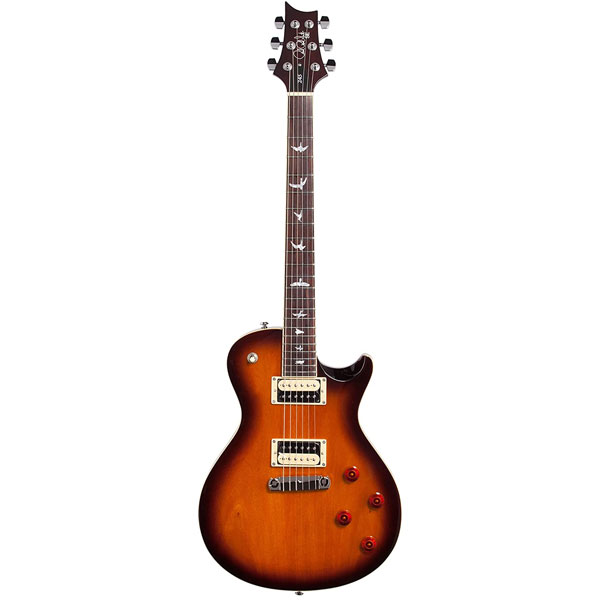
| Criteria | Rating (1-10) |
| Build Quality | 9.1 |
| Sound | 8.8 |
| Versatility | 8 |
| Ease of Use | 9 |
| Value | 9 |
| Overall | 8.7 |
Build Quality and Design
The PRS SE 245, while being affordable, doesn’t compromise on build quality at all. It features a single-cut mahogany body, a wide-fat profile set mahogany neck, and a 22-fret rosewood fretboard with 24.5” scale length. It felt sturdy, but also lightweight while I was testing it.
It has a beautiful maple top with a polyurethane gloss finish that felt smooth to my touch. The hardware includes PRS-designed tuners and a wraparound tailpiece, which I found pretty stable while playing in different tunings.
The old-school bird inlays on the fretboard are eye-catching, a signature PRS touch that I’ve always loved. Looking down at the gorgeous inlays while playing always seems to inspire me more creatively.
I do take slight issue with the PPS plastic nut, which is certainly a cost-saver, but it feels a bit cheap and might get worn out more with string changes. It does work well enough, but you can replace it for a better one, like TUSQ, if you find it to be a problem.
Sound
The PRS 245 “S” humbucking pickups on this machine offer a wide range of tones. They deliver a tone that is dynamic and incredibly expressive. Its harmonic overtones sound delicious, which really brings out chords and upper-fret melodies nicely.
If you’re into classic rock, blues, funk, jazz, etc., this will suit you very nicely. I jammed with a Fender ‘65 amp and I loved its nuance. I compared it side by side with my Gibson LP, and honestly, I was amazed at how close they sounded. But they’re also a bit mellow, so they’re not that energetic when it comes to high-gain tones for metal.
Versatility
With dual volume and tone knobs just like the original Les Paul, this SE 245 is a versatile choice for beginners and pros alike. Like I mentioned earlier, the pickups sound great across various genres.
Personally, I’ve always found most PRS models to be very versatile; they easily adapt to anything I want to play. And this one fits the bill too.
Just to note, the 245 doesn’t have a push-pull coil split, so you can’t really get those ‘glassy’ clean tones like a Strat. But tweak your amp settings a bit, and it’ll still sound gorgeous.
Ease of Use
While the 24.5” scale length seems less than Gibson’s 24.75, in reality it felt very comfortable and just about the same. Bending the strings, playing in different positions across the fretboard, and chugging the low-E string all felt natural.
The single-cut’s bevel and the neck heel felt really good, giving me easy access to all the frets. So I could tap and shred all the way up with no issues.
The wide-fat neck also feels really good while holding chords; it gives you a lot of area to grip with your thumbs. But if you’ve got small hands, it might take some getting used to.
Value and Target Market
The PRS SE 245 offers solid value for money. It’s more affordable than its US counterparts, without any significant compromise on quality. It features a comfortable neck, quality tonewood choice, and a beautiful fretboard. And did I mention it comes with a PRS gig bag? That’s a nice bonus!
I spent a fair bit of time with this model as I’ve always been a fan of PRS, and I’m confident it’s one of the best Les Paul-style guitars around. You get a great blend of quality, reliability, and sound: an excellent choice for a wide range of players.
This guitar is ideal for rock players or anyone looking for a vintage feel and tone in a modern package. It would suit beginners, students, bands just starting out, and even experienced players looking for a quality, budget-friendly instrument.
Pros
- Solid build quality with great wood choices
- PRS 245 “S” humbuckers provide a wide range of tones
- Comfortable wide-fat profile mahogany neck
- Good value for money
Cons
- Not ideally suited for metal players
- No single coil functionality
Bottom Line: The PRS SE 245 is a fantastic single-cut guitar that offers a clear and vibrant tone, solid construction, and easy playability. While it may have a Les Paul shape, it’s got its own character, one that won’t disappoint you at all.
| Estimated Price | $700 |
| Body | Single Cutaway Mahogany Body with Maple Top |
| Neck | Mahogany |
| Fretboard | Rosewood |
| Scale Length | 24.5” |
| Fret Count | 22 |
| Pickups | SE 245 ‘S’ Humbucker Pickups |
| Bridge | PRS-Designed Stoptail |
3. Epiphone Les Paul
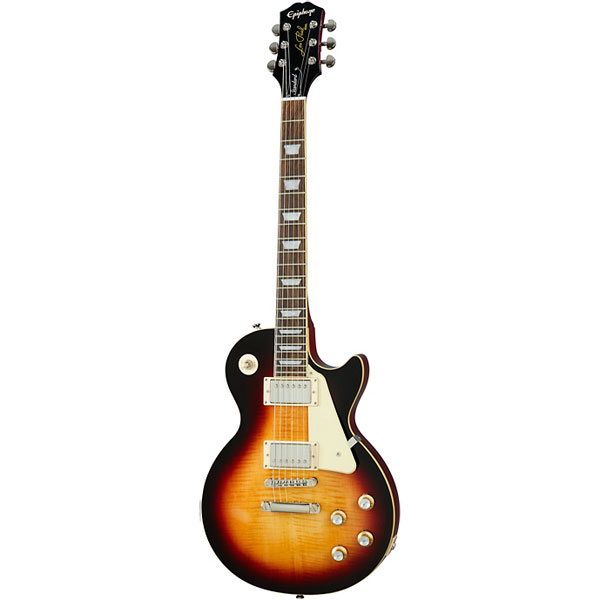
| Criteria | Rating (1-10) |
| Build Quality | 8.7 |
| Sound | 8.5 |
| Versatility | 8.5 |
| Ease of Use | 9 |
| Value | 8.9 |
| Overall | 8.7 |
Build Quality and Design
Right out of the box, the beautifully carved maple top with a flamed maple veneer hits just right. The body is made from solid mahogany and weighs about 9 pounds, which I felt had that authentic Les Paul heft and sustain.
As for the neck, it’s set-in mahogany with a comfortable Slim-Taper “C” profile. The Indian Laurel fingerboard, adorned with traditional trapezoid inlays, adds to the ‘Gibsoness’ of the design. On the bridge end, it features a LockTone Tune-o-matic that’s very dependable. It’s also got a GraphTech NuBone nut which holds tuning stability very well. Overall, I found the build quality to be robust and very reminiscent of the original Les Paul. It’s got this ‘old-timer’ look that I just love; from the shades to the aged-knobs.
Sound
This Les Paul sports a pair of Epiphone ProBucker-2 (neck) and ProBucker-3 (bridge) humbuckers with Alnico II magnets (same as the legendary PAF pickups). These have that distinct Les Paul flavor: powerful in the mids, fat in the lows, and rich natural harmonics.
Thanks to this wide tonal range, the guitar excels in a variety of genres, from hard rock to jazz. Plus, I love the inclusion of separate tone knobs for each humbucker.
Versatility
This Epiphone Les Paul model does not have the push-pull coil tap functionality, probably because it’s inspired by the vintage Gibson ‘60s model. While I didn’t miss it much because the guitar already sounds so good, it definitely would have made it more versatile.
But if you know how to dial in the right tone in your amp and use some pedals, this guitar can deliver just about any tone you need. I even used it for a couple of local gigs and it held its own admirably.
Ease of Use
When it comes to playability, this guitar performs exactly as you would expect from a Les Paul. The slim-C neck and 24.75” scale length are classic Gibson qualities, so I felt right at home with this. The action and factory setup was great out of the box, but I was able to tweak it and make it just right for me with only a small adjustment of the neck relief.
Perhaps the only potential snag is its weight; the heaviness makes it authentic, but it can quickly bear down on your shoulders if you perform live with it like I did. I’ve tested other modern LP copies that manage to be lightweight and still maintain a great playing feel.
Value and Target Market
The Epiphone Les Paul Standard offers a high-quality build, excellent playability, and vintage style at an affordable price point. I feel it captures much of the essence of a Gibson, without the costly overhead.
This guitar is about as close as you can get to a real Les Paul without breaking the bank. Being owned by Gibson, Epiphone has made this guitar authentically true to the original. It looks, feels, plays, and sounds just like you would want.
Players looking for a guitar that is close as possible to the original, but only costs a fraction, as well as guitarists not willing to play their Gibson Les Paul in a live setting.
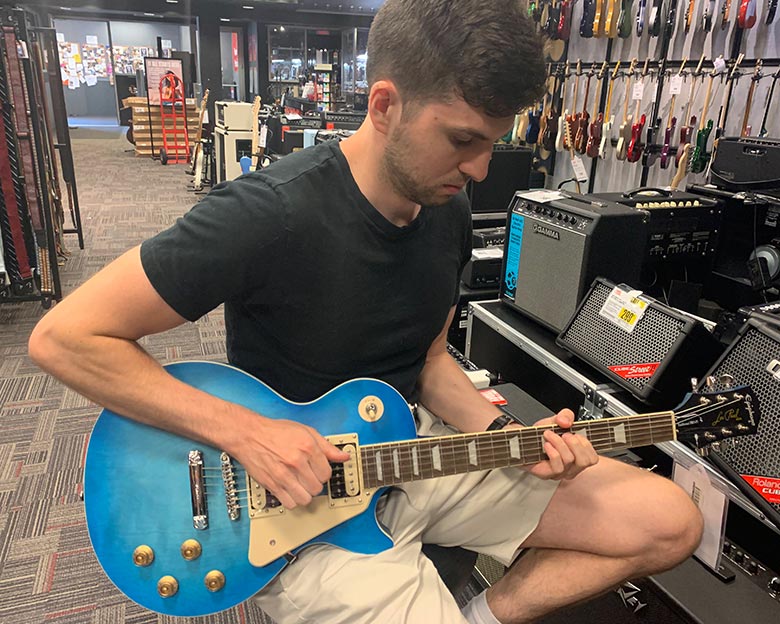
Pros
- Incredible ProBucker pickups inspired by the PAF humbuckers of the ’50s
- High-quality construction reminiscent of Gibson models
- Comfortable to play with great setup
- Excellent value for the price
Cons
- Heavier weight might not suit everyone
- No push-pull coil-split might hinder versatility for some
Bottom Line: The Epiphone Les Paul Standard is a worthy tribute to the iconic Gibson Les Pauls of the 1960s. With its quality build that mirrors the original, authentic tone, and affordable price, it’s a guitar that’s sure to serve you well. And if you’re a Slash fan, this is probably the closest you can get on a budget.
| Estimated Price | $700 |
| Body | Single Cutaway Mahogany body with Carved Maple Top |
| Neck | Mahogany |
| Fretboard | Indian Laurel |
| Scale Length | 24.75” |
| Fret Count | 22 |
| Pickups | Epiphone ProBucker 2 Neck and ProBucker3 Bridge Pickup |
| Bridge | Tune-O-Matic Bridge |
4. Sire Larry Carlton L7
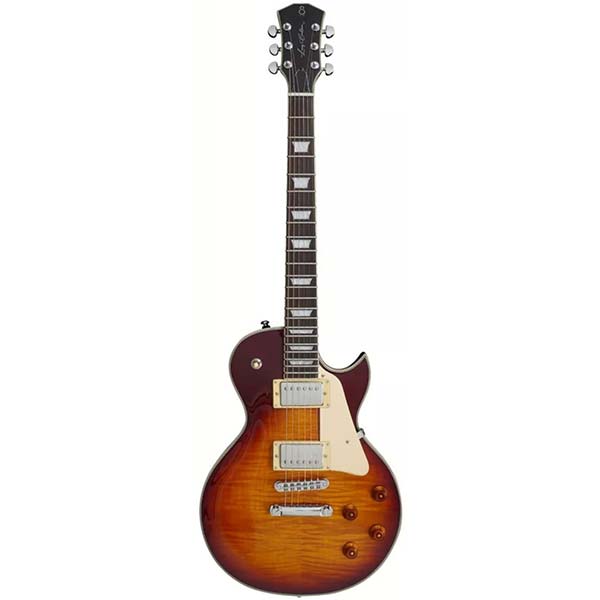
| Criteria | Rating (1-10) |
| Build Quality | 9 |
| Sound | 8.5 |
| Versatility | 8.2 |
| Ease of Use | 8.7 |
| Value | 8.8 |
| Overall | 8.6 |
Build Quality and Design
The Sire Larry Carlton L7, with its single-cut design and blend of mahogany and hard maple, is a visual stunner. The flamed veneer adds a touch of class, made complete by ivory binding.
The C-shaped mahogany neck with the Ebony Edgeless fretboard (with rolled fretboard edges) is one of the most comfortable ones I’ve played at this price point. Most of the specs are as you would expect from a Les Paul, with no compromises.
You can also choose from a range of available colors like Transparent Blue, Tobacco Sunburst, Gold Top, Black, and White; whichever shade fits your vibe. The one I tested had gold hardware, which is an additional expense, but looks elegant and chic.
Sound
This is the Sire L7’s real deal: incredible sound. The Larry Carlton Modern Humbucker Set is the heart and soul of this Les Paul inspired guitar, with a rich and punchy tone that lives up to Carlton’s legendary history.
Playing through a tube amp, I could really feel the clarity and top-end sparkle in each chord as it sustained. With an overdrive pedal, I got a really creamy lead tone too. And the volume controls were really response; you can dial them down and make them sound mellow without losing power.
The only catch I found? The pickups are naturally quite bright, so even if you lower the tone knobs, they’re not as warm and dark as other models tend to become.
Versatility
One word: adaptable. Whether it’s blues, jazz, rock, or even psychedelic tones with a fuzz pedal, the L7 handles them all with grace. The Sire-made electronics add to the guitar’s responsiveness, so it kept up with everything I put it through.
The absence of a push-pull coil tap option did leave me wishing for a bit more tonal variety, but the overall versatility is still top-notch.
Ease of Use
The playability of this unit is as impressive as it looks. The 24.75″ scale length felt familiar, and the 12″ fingerboard radius was just right for playing chords and riffs. The factory setup came with low action and perfect intonation, so I could get straight to jamming with it.
Plus, the Sire Premium Locking Tuners are stable and hold well while playing in different tunings like Drop D and Open E.
Value and Target Market
Given its build quality, and sound, I reckon the Sire Larry Carlton L7 offers excellent value for money. It’s perfect for intermediate players who are looking to upgrade from their first guitar or even for professionals who need a reliable workhorse for gigging or recording.
Having had the chance to play the L7 in various sessions over the past year, I can confidently say it’s a guitar that keeps giving. The sound quality, aesthetics, and playability are all top-notch. Overall, it’s one of the best single-cut guitars out there.
The L7 is perfect for intermediate to advanced players who are looking for a versatile, high-quality LP-style guitar. It’s well-suited for jazz, blues, and rock. And it’s reliable enough for gigging.
Pros
- Excellent looks with a premium build and feel
- Comfortable to play with rolled-off fret edges
- Rich and warm sound with bright pickups
- Good value for money
Cons
- Tone knobs weren’t that effective
- No split coil setting
Bottom Line: The Sire Larry Carlton L7 electric guitar is a sophisticated and versatile instrument that offers classy quality at a reasonable price. With its elegant design, robust sound, and adaptability, it’ll likely exceed your expectations.
| Estimated Price | $600 |
| Body | Mahogany Body with Solid Hard Maple Top |
| Neck | Mahogany |
| Fretboard | Ebony (Edgeless) |
| Scale Length | 24.75” |
| Fret Count | 22 |
| Pickups | Larry Carlton Modern Humbuckers |
| Bridge | Sire Modern Tune-O-Matic Bridge |
5. Reverend Roundhouse
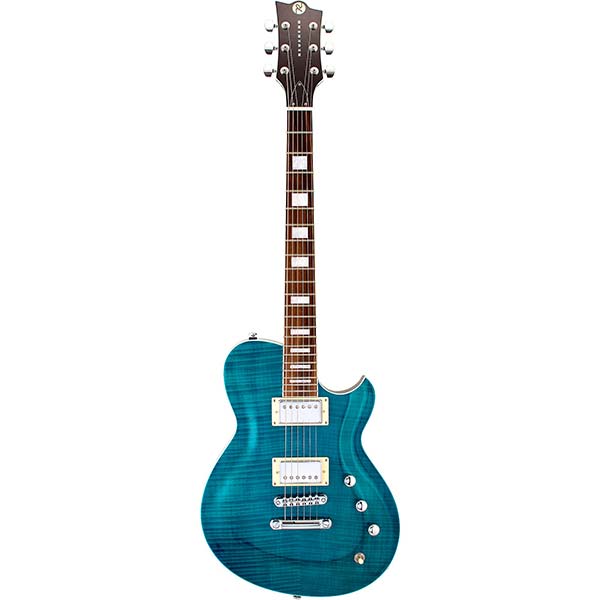
| Criteria | Rating (1-10) |
| Build Quality | 9 |
| Sound | 8.3 |
| Versatility | 8.6 |
| Ease of Use | 8.9 |
| Value | 8 |
| Overall | 8.5 |
Build Quality and Design
Right out of the box, the Reverend Roundhouse was absolutely stunning. The body and neck are made of korina, a tonewood known for its balanced sound and low weight. On top of the body is a gorgeous maple top (mine was Venetian Gold) with a beautiful bevel: it seemed to catch the light in just the perfect way.
The guitar features a three-piece Korina set neck that provides an extra level of stability and eliminates any potential dead spots. Meanwhile, the rosewood fretboard felt very smooth during my review.
While the Roundhouse has a single-cut design like a Les Paul, its body shape still feels unique, like it has its own character. And while some might miss the pickguard, I love it because it looks sleek and modern. I do fear scratching it while playing heavy riffs though.
Sound
This modern single cut guitar sports the Reverend HA5 Humbuckers on both the neck and bridge positions. Even though they’re the same model, Reverend says that both pickups are specifically tuned for the position they’re in: for maximum clarity and presence.
To my ears, the tone felt very warm and mellow. The kind of sound that could make you melt away and float. It’s perfect for some soulful phrasing and dynamic leads, because it really brings out the nuances of your playing.
Versatility
In my opinion, I found this guitar is very well suited for genres like funk, country, blues, jazz, etc., where you need expressive dynamics and that crunchiness, without oversaturating the tone.
But if you want to, you could push it to distortion and play some heavy stuff too. It definitely is versatile and adaptable.
However, while there’s no coil-split on this guitar, Reverend has included a ‘bass contour’ knob, which allows you to fine-tune the frequency curve of the guitar. It’s like an inverse tone knob; if you lower it, you can get a brighter, trebly tone like you would on a single-coil pickup.
This was my favorite feature, and it gave me the best of both worlds. It lacks separate tone and volume knobs for the pickups, but the well-tuned pickups make up for it.
Ease of Use
The Roundhouse is an experienced guitar player’s dream. The 24 and three-quarter-inch scale length and the medium oval profile make it comfortable to play for extended periods. The knobs feel smooth and easy to adjust on the fly.
Everything feels thoughtfully designed; modern, but still inspired by Les Paul. And the body is quite light, so it’s easy to play while standing up too.
Now the pickup selector is at the bottom of the guitar rather than the neck area, which can take some getting used to. But within a few days of jamming with it, I had no issues at all.
Value and Target Market
The Reverend Roundhouse is a premium guitar, which shows in its price tag. So if you’re a complete beginner, I would not recommend it at this stage; other LP copies half the price can do a great job nowadays.
But if you’re looking for an exquisite single-cut guitar that’s inspired by the Gibson Les Paul, without straight up copying it, the Roundhouse is a great pick. It’s a work of art; I could just stare at it all day and feel inspired by its distinctive character.
This model is great for seasoned players looking for a high-quality single-cut guitar, with some unique features. It’s comfortable, looks magnificent, and the bass contour was a special highlight for me that adds to the tonal versatility. Any guitarist worth their salt can take good advantage of this impressive instrument.
The Reverend Roundhouse is best suited for guitarists who crave versatility and a unique tone. It’s not the best option for novices looking for an LP-style guitar, and it’s also not a 1:1 of the Gibson Les Paul. But if you can adapt to this guitar, it’ll serve you very well.
Pros
- High-quality Korina body and neck
- Versatile tone with bass contour control
- Comfortable playability
- Beautiful beveled maple top
Cons
- Expensive, so it’s not great value for beginners
- Pickups are mellow, so don’t expect a lot of punch
Bottom Line: The Reverend Roundhouse is an incredible entry in the single-cut guitar market. Excellent build quality and playability with a nuanced sound make it a must-try for anyone who’s looking to try new guitars for inspiration.
| Estimated Price | $1400 |
| Body | Korina with Maple Top |
| Neck | 3-piece Korina |
| Fretboard | Rosewood |
| Scale Length | 24.75″ |
| Fret Count | 22 |
| Pickups | Reverend HA5 Humbucker Neck and Bridge |
| Bridge | Tune-O-Matic Bridge |
6. Schecter Solo-II
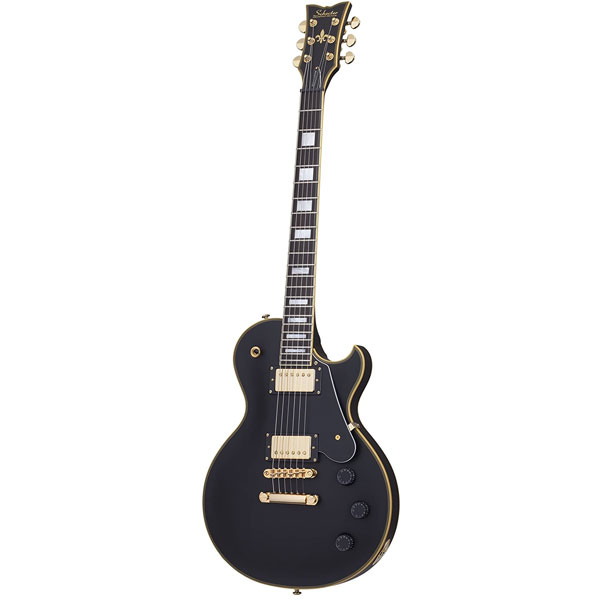
| Criteria | Rating (1-10) |
| Build Quality | 8.3 |
| Sound | 8 |
| Versatility | 8.5 |
| Ease of Use | 8.5 |
| Value | 8.2 |
| Overall | 8.3 |
Build Quality and Design
The Schecter Solo-II boasts solid build quality, and its design offers a modern twist to the traditional Les Paul style. The craftsmanship is impressive, with the mahogany body and solid maple top giving the guitar a sturdy feel and a gorgeous aesthetic. Similar to the ESP, the single-cut body on this looks razor-sharp.
I got the most classy finish: the Aged Satin Black with gold hardware and mother-of-pearl block inlays. You can also get Trans Black Burst, or the Natural Flame finish with chrome hardware; but the most spectacular, pricey, and perhaps a bit over the top one is the Gloss Natural Burl Top, with an organic look and Abalone Block inlays.
Sound
The Solo II features the Schecter Pasadena Neck and Schecter Pasadena Plus Bridge Humbucker Pickups, which provide a ton of bite, making this guitar incredibly well-suited for heavy genres like hard rock and thrash metal.
Schecter claims their bridge pickup was designed for Avenged Sevenfold’s guitarist, so it’s got a high output. I also tried playing some Hetfield-style riffs on it, and it held up very well with a lot of aggressive presence without any muddiness.
The push/pull tone pot was a welcome addition that allowed me to switch between the sizzle of single-coil-like tones and the richness of humbucker crunch. However, it’s not as warm as one may like.
Versatility
Schecter Research’s guitars have always proved versatile in my experience, and this one is no different. I was particularly impressed by how comfortably it handles a wide range of genres, especially compared to its single-cut competition. Whether I was churning out bluesy licks or riffing a thrash metal track like ‘Master of Puppets’, the Solo-II held its own.
The split coil functionality makes it even more versatile. And another thing I liked is how I could make the guitar more mellow by dialing the volume knob down, without losing its dynamics too much.
Ease of Use
The Solo-II felt as familiar as any Les Paul-style guitar, but it’s also got some nice design elements. For one, I really liked the 12” to 16” compound fretboard radius, because it made it much easier to play solos on the higher frets, especially with tapping and legato.
Plus, the thin-C neck profile felt comfortable for playing with scales and licks. And the extra jumbo frets felt better than I had expected. But it’s a bit thin to grab onto, and so playing a lot of power chords occasionally felt a bit slippery to me.
Value and Target Market
The Schecter Solo-II is a bit on the expensive side, but with its superb craftsmanship, high-quality materials, and innovative design, I think it’s well worth it. It’ll serve intermediate and professional players nicely, especially if you like exploring different genres.
After spending a few weeks with the Schecter Solo-II, I can confidently say that it’s worth every penny. It’s one of the few guitars on this list I felt was a proper fit for my collection. It’s a perfect blend of classic aesthetics and modern playability, making it a great choice for any guitar enthusiast.
The Solo-II is ideal for intermediate to advanced players looking for a versatile, high-quality guitar. It’s perfect for those who appreciate the classic Les Paul style but crave a more modern instrument.
Pros
- Exceptional build quality and design
- Powerful and versatile sound
- Great upper fret access with compound radius
- Split-coil functionality
Cons
- A bit too advanced for beginners
- Lack of warmth in its tone may upset Les Paul fans
Bottom Line: The Schecter Solo-II is a fantastic Les Paul-style guitar that delivers in all aspects – sound, build quality, versatility, and value for money. For me, it’s a guitar that has inspiring looks and tone, making it a worthy addition to any collection.
| Estimated Price | $1000 |
| Body | Single Cutaway Mahogany Body with Maple top |
| Neck | 3-piece Mahogany |
| Fretboard | Ebony |
| Scale Length | 24.75” |
| Fret Count | 22 |
| Pickups | Schecter Pasadena Neck and Schecter Pasadena Plus Bridge Humbucker Pickups |
| Bridge | TonePros Tune-O-Matic Bridge |
7. Gretsch Guitars G5220 Electromatic Jet
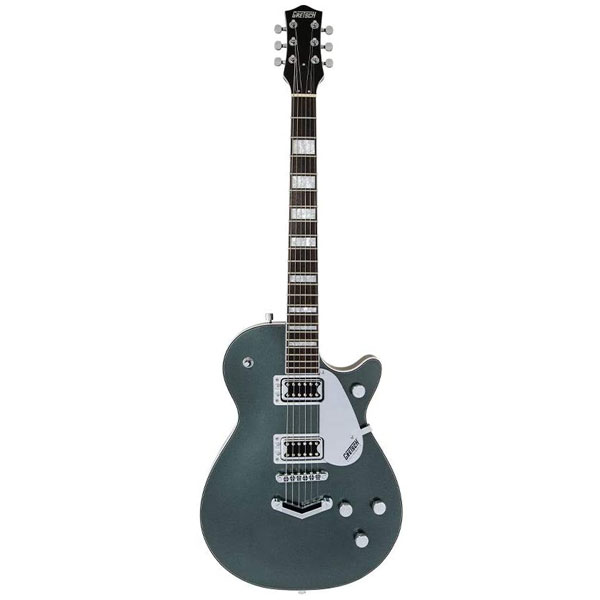
| Criteria | Rating (1-10) |
| Build Quality | 9 |
| Sound | 8.5 |
| Versatility | 8 |
| Ease of Use | 8.7 |
| Value | 8.6 |
| Overall | 8.5 |
Build Quality and Design
Gretsch’s take on an affordable single-cut design comes with a chambered mahogany body, a laminated maple top, and finished in eye-catching colors like Dark Cherry Metallic and Firestick Red; this guitar is bursting with vintage flair.
The design features like the Gretsch V-Stoptail tailpiece and Anchored Adjusto-Matic bridge blend both functionality and style, giving you a guitar that looks as impressive as it sounds. The bound headstock, Big Block pearloid inlays, and chrome hardware add to the retro aesthetic.
The build quality is top-notch, and at just under 8 lbs, I found it very comfortable on my lap. The set-neck construction felt sturdy in my hands and inspired confidence. The 12″ radius neck was smooth to navigate and comfortable to play.
Sound
The real soul of this guitar is its pickups. The Black Top Broad’Tron Humbuckers offer a rich mid-range, fat lows, and shimmering highs. From clean, bright tones to aggressive overdrive, I felt this guitar sing any note I played on it.
Whether I was jamming to some blues or rocking out some crunchy riffs, the pickups delivered with clarity and definition. The treble bleed circuit added an extra layer of sonic detail, maintaining that sparkling treble even when I rolled down the volume.
Versatility
What you get from this guitar is a classic retro sound, as I would expect from Gretsch. It excels in classic rock, blues, jazz, funk, etc.
Plus, you get a lot of tonal control here: individual volume knobs for each pickup, along with a master volume and master tone knob. There’s no coil split, but the bright treble makes it sound great on any clean tone.
Ease of Use
The Thin “U” style neck allowed for easy finger movement, and the medium jumbo frets felt just right. I did need to tweak the setup slightly to lower the action, but that’s just my personal preference.
I must say, the three volume knobs on the guitar can take a little getting used to, especially with the slightly awkward positioning of the neck control. But they were very responsive and adjusted the sound really well.
Value and Target Market
With its affordable price tag, the Gretsch G5220 is fantastic value for money. It’s well-suited for intermediate players, vintage tone lovers, and those looking for a unique blend of modern features with old-school aesthetics.
From its striking design to its versatile tonal range, I really enjoyed playing this guitar throughout the review. It felt inspiring; whether I was recording some demos or just jamming with my friends.
If you want a Gretsch, inspired by Les Paul, but with a retro-futuristic design that looks stunningly classy, this is the guitar for you. But it’s not a Les Paul copy by any means; it has its very own character.
Pros
- Black Top Broad’Tron Pickups deliver crisp, warm tones
- Solid build quality with vintage appeal
- Treble bleed circuit ensures clarity on low-volume settings
- Comfortable to play with a well-crafted neck
Cons
- Triple volume knobs can get confusing
- No tone control for individual pickups
Bottom Line: The G5220 is a beautifully crafted guitar that offers incredible sound and playability at a very competitive price point. Its blend of vintage and modern features makes it a versatile choice for various musical styles. It’s an instrument that’s hard to put down once you start playing.
| Estimated Price | $550 |
| Body | Single Cutaway Chambered Mahogany Body with Maple Top |
| Neck | Mahogany |
| Fretboard | Black Walnut |
| Scale Length | 24.6” |
| Fret Count | 22 |
| Pickups | Black Top Broad’Tron Humbuckers |
| Bridge | Adjusto-Matic Bridge with a “V’ tailpiece |
8. Mitchell MS450
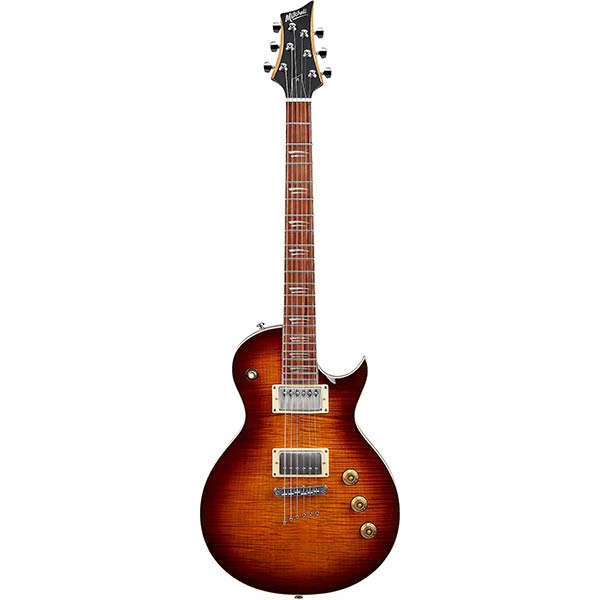
| Criteria | Rating (1-10) |
| Build Quality | 7 |
| Sound | 7.5 |
| Versatility | 7.5 |
| Ease of Use | 7.8 |
| Value | 8.5 |
| Overall | 7.7 |
Build Quality and Design
The Guitar Center exclusive Mitchell MS450 model as their take on the classic single cut design. With a mahogany body, flame maple top, and a set mahogany neck with a shallow-C profile, it’s a visual treat at such a low price point.
The body features bevels that make it comfortable for playing, and the string-through-body design offers a lot of sustain and tuning stability. It’s also nice to see a GraphTech TUSQ nut on this model; should help add to its durability.
I did feel a few rough edges here and there, and the neck heel was not as smooth as I’d like it to be, but I’d say it’s a common, forgivable problem on budget guitars like this. Now I’m a fan of classic Les Paul style inlays, so I didn’t like the ones on this pau ferro fretboard too much.
Sound
Mitchell has loaded this guitar with humbucking Alnico V pickups, which are paraffin-dipped to reduce unwanted feedback. I tried playing some crunchy blues riffs in A, and the bright top-end really caught my ear.
Now to be fair, I wasn’t expecting a lot from the pickups on this, but I was pleasantly surprised. They do work well for the most part, especially for beginners. Plus, you get a push/pull coil tap, another great feature in this budget segment.
Versatility
This guitar’s tone is well-rounded and suitable for various genres, from rock to jazz. The coil split functionality adds another option for your tonal palette: you can individually split both humbuckers.
For a beginner who wants to try different bands and styles, still finding their sound, this guitar does the trick. But I did find the MS450 leaning a bit towards high-gain tones, suitable for rock and metal, with a lot of brightness and presence to it.
Ease of Use
Now, the factory setup on this guitar was not as good as you get from more expensive models, but it was decent. There weren’t any major flaws; just minor issues like neck relief, action, and intonation that I had to adjust to get it to where I wanted it.
After that, the guitar played very well; good enough to rival single-cut guitars a weight above it. It had a lot of sustain, and the 24.75” scale length felt familiar as always.
Value and Target Market
The MS450 offers a lot for your money. The appealing modern design and versatile sound make it a good choice if you’re not looking to splurge on a Les Paul copy. I’d wholeheartedly recommend it to beginners looking for a solid investment in their guitar journey.
The Mitchell MS450 can be a bit rough around the edges at times, but it’s incredible value for money. It’s got a good design and sound out of the box, and with some tinkering, it can get even better.
This machine is rough around the edges, but offers quite a bit of value, especially if you are not afraid of tinkering with it. If you have a pair of great pickups you need to rehome, or if you are only starting out on your guitar journey, this can be just the foundation you need.
If you’re inspired to start learning guitar, need a Les Paul style model, and are unsure of what you want to play or how much you should spend, this is the perfect bet. But I think experienced players may want to splash a bit more and get one of the better guitars on this list.
Pros
- Attractive flamed maple design
- Versatile sound with coil-tap feature
- Really affordable
- Comfortable on your lap while shredding
Cons
- Some build quality and factory-setup issues
- Sound might be too bright for some
Bottom Line: The Mitchell MS450 is a great value pick for those on a budget. It’s a worthwhile first instrument and can be a pretty good spare if you already have another great guitar to work with.
| Estimated Price | $400 |
| Body | Single-Cutaway Mahogany with Flamed Maple Veneer |
| Neck | Mahogany |
| Fretboard | Pau Ferro |
| Scale Length | 24.75″ |
| Fret Count | 22 |
| Pickups | Alnico V with Coil Tap |
| Bridge | TOM-style Fixed Bridge through Body |
9. D’Angelico Deluxe Atlantic
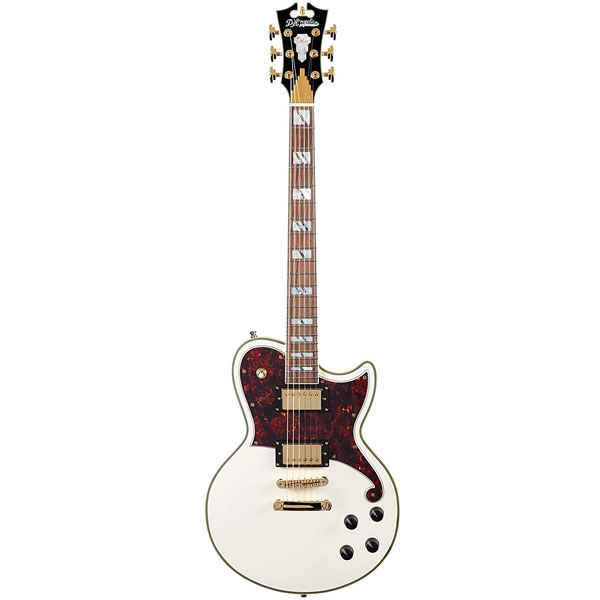
| Criteria | Rating (1-10) |
| Build Quality | 9.5 |
| Sound | 9.2 |
| Versatility | 8 |
| Ease of Use | 9 |
| Value | 7 |
| Overall | 8.5 |
Build Quality and Design
At just first glance, the D’Angelico Deluxe Atlantic is a treat for your eyes. This guitar isn’t another Les Paul knock-off; it’s an art piece that combines style with functionality. Built with an Alder body that’s lightweight yet resonant, and a 3-piece Maple/Walnut neck that’s both sturdy and elegant, the craftsmanship quality is top-notch.
The Ebony fingerboard feels smooth and luxurious, and the Matte Walnut satin finish adds a touch of class. The model features a low-profile heel neck for maximum playability, which I absolutely loved; my left hand felt natural on the top frets.
It comes in four different finishes, and each one looked breathtaking to me. The headstock particularly has some nice inlays that add class to this piece.
Sound
Plugging this beauty into my Blue Angel amp and testing it with different setings, I was blown away by the sound. The Seymour Duncan Seth Lover A4 Humbuckers provide a versatile tone that’s punchy and offers massive sustain.
The guitar also features coil-splitting capabilities for both pickups. From rich and warm humbucker tones to vivid and crystalline single-coil sounds, the possibilities are endless.
I did notice that the guitar’s midrange was slightly pronounced due to the Alder body, but I actually liked this characteristic. Overall, it sounds just like it looks: classy.
Versatility
Whether you’re into jazz, blues, rock, or anything in between, this guitar has got you covered. The coil split flexibility and 4-knob volume/tone controls allow you to experiment and find your unique sound.
I tried this with various pedals and amps, it felt as if it brought out the clarity and distinction from anything I used. So it’s definitely a versatile, adaptable beast that’s ready to rock whatever you throw at it.
Ease of Use
The Atlantic feels like it was built for playability, with carefully crafted design elements. The C-shape profile neck and the 14″ radius make it comfortable to play, while the Grover 509 Super Rotomatic Locking tuners kept everything in tune even as I was bending all over the place.
The single-cutaway and the neck heel are contoured such that it’s really easy to shred and tap all over the 20th-24th frets with no issues.
Value and Target Market
The Atlantic is an exquisite, premium guitar that’s brimming with character and personality. From the expensive wood construction to top-tier pickups and ergonomic design, it’s built for serious players. The hardshell case included with this model adds a nice touch for traveling musicians.
I’ve spent a great deal of time with the Atlantic: playing, recording sessions, and simply enjoying the feel and sound of this guitar. The tones I’ve been able to achieve, the comfort of playing, and the visual appeal all make it a must-try. I classify this as a premium guitar that’s meant to inspire. It’s not a Les Paul copy; it’s a single-cut work of art.
Pros
- Exquisite design and build quality
- Versatile sound with punchy humbuckers
- Coil-split flexibility for varied tones
- Comfortable neck and fretboard
Cons
- Enhanced midrange might not suit everyone
Bottom Line: The D’Angelico Deluxe Atlantic is a top-tier guitar that offers the perfect blend of style, sound, and versatility. Its classic design, coupled with modern features like coil-splitting capabilities and locking tuners, make it a valuable addition to any guitarist’s collection. It’s a player’s guitar and a show-stopper in every sense; a work of art that feels true to John D’Angelico’s legacy.
| Estimated Price | $1,700 |
| Body | Single Cutaway Bound Basswood Body |
| Neck | Maple/Walnut |
| Fretboard | Pau Ferro |
| Scale Length | 24.75” |
| Fret Count | 22 |
| Pickups | Seymour Duncan DA-59 Humbucker Pickups |
| Bridge | Tune-O-Matic Bridge |
10. Jackson PRO Monarkh SC
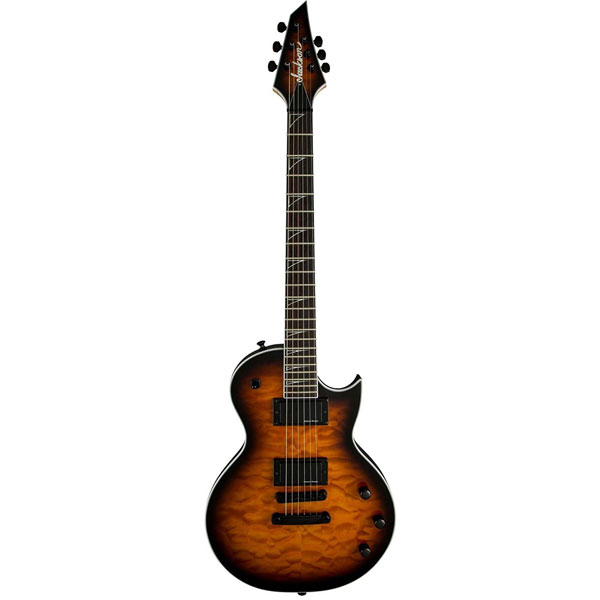
| Criteria | Rating (1-10) |
| Build Quality | 8.5 |
| Sound | 8.5 |
| Versatility | 8.2 |
| Ease of Use | 9 |
| Value | 8 |
| Overall | 8.4 |
Build Quality and Design
The Jackson PRO Monarkh SC is a guitar that shows off its modernity while paying homage to the classic Les Paul. With its mahogany body and arched maple top, it’s a beauty to behold. My unit came with a satin matte black finish, with elegant pearloid Ghostfin inlays.
With a 24.75” scale, set maple neck, and a Speed Neck profile, it’s crafted for comfort. The guitar’s 12″-16″ compound radius and 22 jumbo frets provided a comfortable grip and gave me easy access to the entire fretboard.
However, I did find the plastic nut to be a bit of a letdown, especially considering the overall quality of the other components. You may consider getting it replaced if it becomes an issue for you down the line.
Sound
True to Jackson, I was immediately hit with a wall of sound that was both rich and warm as soon as I tried the guitar. The Seymour Duncan JB SH-4 bridge and ’59 SH-1N neck humbuckers produce a precise low-end punch with a vocal rock lead sound that’s perfect for hard rock, metal, blues, or jazz.
This pair of pickups are one of the best you can get for heavy genres, but they also work really well at everything else. Plus, the open-cover look is a nice change compared to most Les Paul copies.
Versatility
The pair of pickups in this guitar lend themselves to a very versatile sound. With the neck, I was able to get a smooth, creamy lead tone, while the bridge ones can punch a hole through any riff.
What I found truly impressive was the guitar’s ability to retain a unique mid-range character, regardless of the style I was playing. It always cuts through the mix beautifully. But I admit, some may not like this aggressive personality of the guitar.
Ease of Use
The contoured cut heel, dome-style knobs, and adjustable Jackson TOM-style bridge make this guitar easy to play and quick to adapt to your needs. You also get two volume knobs and one tone control, but unfortunately, there’s no coil split here.
I found the neck to be whip-thin, with a satin-smooth, hand-rubbed oil finish that allowed my hands to glide fluidly along the bound ebony fingerboard.
Value and Target Market
The Jackson PRO Monarkh SC isn’t cheap, but it offers a lot for the money. Premium pickups, locking tuners, and an elegant design make it a solid investment for intermediate and advanced players alike. I do wish they’d include a gig bag at this price though.
After putting this thing through its paces, I can confidently say it’s a top performer. One of the best Les Paul-style guitars for metal that I’ve reviewed, and still flexible enough to adapt to other genres. And the eye-catching finishes only add to the overall aggressiveness of this guitar.
If you want a Les Paul-style guitar that can comfortably take on even the heaviest of metal genres, this is the one for you. But don’t dismiss it as a one-trick pony; it’s still got a lot of power up its sleeve for anything you throw at it.
Pros
- Seymour Duncan humbucker pairing for rich tones
- High-quality build with an elegant finish
- Versatile for various musical styles
- Excellent playability with a smooth neck
Cons
- Plastic nut could be better
- No split coil functionality
Bottom Line: The Jackson PRO Monarkh SC is beautiful, versatile, highly playable, and offers good value for money: it’s one of the best deals around. With its unique combination of classic and modern elements, it’s a standout guitar for anyone looking to upgrade their gear.
| Estimated Price | $1000 |
| Body | Single Cutaway Mahogany Body with Arched Maple Top |
| Neck | Maple |
| Fretboard | Ebony |
| Scale Length | 24.75” |
| Fret Count | 22 |
| Pickups | Seymour Duncan ’59 SH-1N and JB TB-4 |
| Bridge | Jackson Tune-O-Matic Adjustable Bridge with Anchored Tailpiece |
| Name of Product | Image of Product | Description | Price Range | Full Review |
|---|---|---|---|---|
| 1. ESP LTD EC-256FM Electric Guitar (Best Value) | 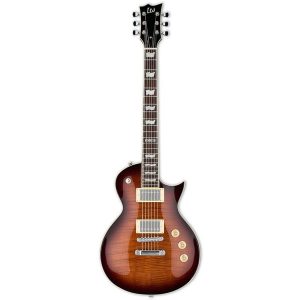 | Body: Single Cutaway Mahogany Body with Carved Flamed Maple Top Neck: Mahogany | $600 | Read Full Review Above |
| 2. PRS SE 245 (Best Overall) | 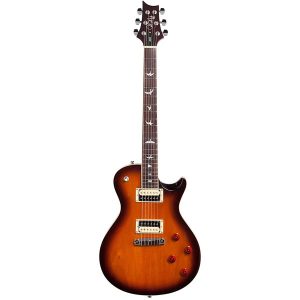 | Body: Single Cutaway Mahogany Body with Maple Top Neck: Mahogany | $740 | Read Full Review Above |
| 3. Epiphone Les Paul Standard ’60s Electric Guitar | 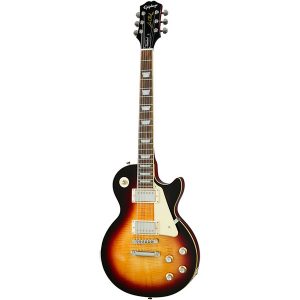 | Body: Single Cutaway Mahogany Body with AA Flame Maple Top Neck: Mahogany | $600 | Read Full Review Above |
| 4. Sire Larry Carlton L7 | 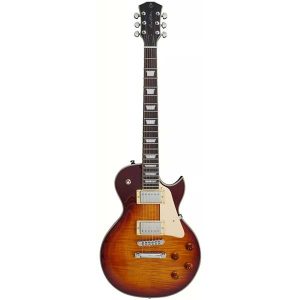 | Body: Single Cutaway Mahogany Body with Maple Top Neck: Mahogany | $600 | Read Full Review Above |
| 5. Reverend Roundhouse | 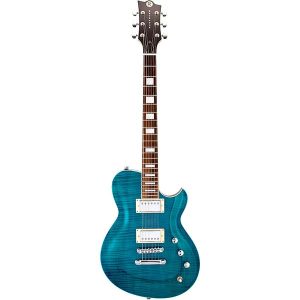 | Body: Single Cutaway Korina Body with Maple Top Neck: Korina | $1400 | Read Full Review Above |
| 6. Schecter Guitar Research Solo-II Custom Electric Guitar | 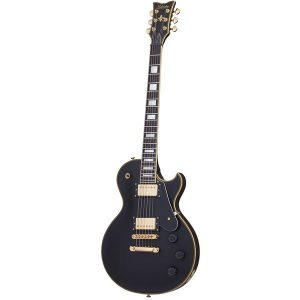 | Body: Single Cutaway Mahogany Body with Maple top Neck: Mahogany | $1000 | Read Full Review Above |
| 7. Gretsch Guitars G5220 Electromatic Jet Electric Guitar | 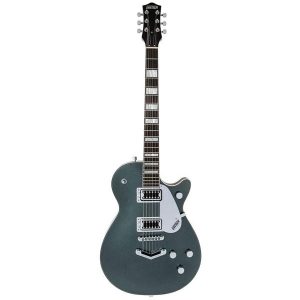 | Body: Single Cutaway Chambered Mahogany Body with Maple Top Neck: Mahogany | $550 | Read Full Review Above |
| 8. Mitchell MS450 | 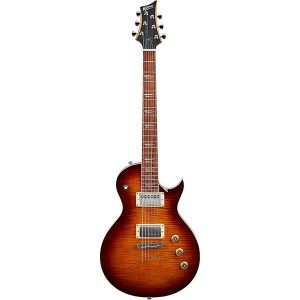 | Body: Single Cutaway Mahogany Body with Flamed Maple Veneer Neck: Mahogany | $400 | Read Full Review Above |
| 9. D’Angelico Deluxe Atlantic Electric Guitar | 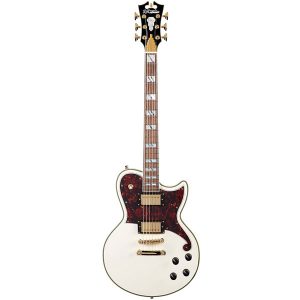 | Body: Single Cutaway Bound Basswood Body Neck: Maple/Walnut | $1700 | Read Full Review Above |
| 10. Jackson PRO Monarkh SC Electric Guitar | 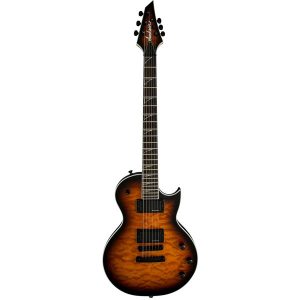 | Body: Single Cutaway Mahogany Body with Arched Maple Top Neck: Maple | $1000 | Read Full Review Above |
Choosing the Best Les Paul Copy (Buying Guide)
Since we are speaking about Les Paul style guitar, we have to say that just about every guitar manufacturer out there, apart from Fender Stratocaster obviously, has or has had a Les Paul copy in their lineup of guitars, this means we won’t be listing all of them, but we will shine spotlight on those whose work and quality warrants a mention. Also, we will also provide information you will need to know when choosing a Les Paul copy.
What Makes a Good Les Paul Copy?
The best Les Paul style guitar is always going to be the Gibson Les Paul, so let’s just get that out of the way. However, in the world of guitar, the word “copy” or “replica” does not necessarily have to spell poor playability and subpar build quality. In fact, you could make a case that some of the guitars we have reviewed on our list are actually better than the original. Let’s take Slash as an example and his iconic sound. Slash has always been known as a Gibson Les Paul player, but what you may not know is that he recorded the legendary Guns N’ Rose LP “Appetite for Destruction” on a guitar that wasn’t a Gibson Les Paul.
During those early GN’R days, Slash, just like the rest of the band, was struggling to make ends meet, and couldn’t afford a Gibson Les Paul, so he was given a Les Paul replica built by luthier Kris Derrig. Slash has used that guitar on every single piece of music he has recorded ever since. In fact, the guitar was so good that Gibson decided to make a replica of a replica, and the result is Gibson’s AFD Les Paul guitar which matches the specs of the “original”. Although Gibson has been more than ready to sue other manufacturers for copying their design, it turns out that protecting the design of a guitar body with a patent is a very difficult thing to do, which is why there are so many copies available nowadays.
So, given the right materials and a capable luthier or manufacturer, you can end up with a Les Paul style guitar that matches the original pretty closely. But, in order to choose a good copy, let’s see what makes the original so coveted:
Les Paul Guitar Body
Gibson Les Paul, along with Fender Stratocaster, has a body that is instantly recognizable. The iconic design featuring a single cutaway, smaller upper bout and a larger lower one is just about the epitome of the electric guitar. Sure, nowadays you can get a Les Paul with double cutaways, but when we think of a Les Paul, we think of its default, single cut incarnation. Usually, the body itself is made out of mahogany. Les Pauls often have a top made out of maple, which can make the guitar look absolutely gorgeous, provided that the finish is semi-transparent and that it showcases the beauty of the wood.
Of course, Les Paul is also available in solid color finishes, as well. Other cosmetic and functional details, such as the binding around the body or a pickguard also vary from one Les Paul model to the other.
Neck and Headstock
Although Gibson Les Pauls have been issued with slightly different headstocks over the years, they all have one thing in common, and that is three tuning machines on the left side of the headstock and three on the right. This is the opposite of Fender Stratocaster, which has six tuning machines on one side of the headstock. As for the material, Les Pauls are usually made out of mahogany or maple, with the latter being a preferable choice in terms of sound and durability. When it comes to the fretboard, Les Pauls usually feature a rosewood or ebony fretboard, but there are plenty of cheaper models that feature more sustainable tonewoods.
Les Paul guitars have a scale length of 24.75”. This gives the guitar that signature warm tone, just like the 25.5” scale length gives the Strat its characteristic twang. However, there are Les Paul-style guitars, such as most PRS guitars, which don’t necessarily stick with this scale length. Usually, Les Pauls have 22 jumbo frets, but models with 24 medium-jumbo frets are not that uncommon. Finally, we come to fretboard inlays, which are just dots on some models, and more complex block or trapezoid shapes on the more expensive guitars.
Hardware
The most iconic and common pickup configuration on a Les Paul guitar consists of two humbucker pickups. To control these pickups, you get a three-way selector switch, which enables you to play any combination of the neck/bridge pickup. Also, for each pickup, you get a separate tone and volume knob. Nearly all Les Pauls come with a fixed, Tune-O-Matic style bridge, which enables the player to adjust the individual string saddles, not just when it comes to pitch, but string action as well.
Guitar Brands that Make Les Paul Style Guitars
While there are plenty of nearly anonymous guitar manufacturers that make cheap and poorly built Les Paul copies, here are some reputable companies which produce their own take on the classic Les Paul electric guitar:
PRS
Paul Reed Smith guitars are some of the finest instruments you can currently buy for your money, and in many respects, their guitars surpass the original Les Paul. While it would be unfair to treat them as a Les Paul copy, since they have a different scale length and a number of other details which make them unique, we have included them because they offer pretty much everything you would look for in a Les Paul, especially if you were to look at their USA-made lineup of guitars. Of course, those come with an appropriate price tag. For those looking for a more affordable option, PRS has its SE lineup, which is made in Indonesia.
These guitars offer probably the best money/value ratio out there, especially when it comes to Les Paul style guitars. In fact, they pretty much beat any Les Paul copy when it comes to build quality, playability, and looks, and they get dangerously close to some of the cheaper USA-made Gibson Les Paul, such as the Les Paul Studio. In fact, PRS was sued by Gibson over its single cut design. Surprisingly, Gibson lost, and PRS continued to make their single cut guitar, since copyrighting a guitar shape is much harder than you would imagine. You should also pay attention to the PRS McCarty models, which are named after Ted McCarty, who was the president of Gibson during its golden era, and has also helped Paul Reed Smith with his guitars.
Tokai
Tokai is a Japanese guitar manufacturer that has a long tradition of making high-quality replicas of Gibson and Fender instruments. In fact, in the 1970s, there was a period of time when Gibson was having a hard time keeping its customers, and companies such as Ibanez and Tokai emerged with pretty accurate copies of the Les Paul. Ibanez actually got sued, and Tokai was threatened with a lawsuit, which is why their instruments of this era are also known as “lawsuit guitars”. Ibanez replicas are no longer made, but they are highly coveted among players because of their quality, which is rumored to be superior to that of original Gibsons of the era.
Tokai, on the other hand, still makes their copies of the Les Paul, and according to guitar aficionados, they are actually better than original Les Pauls from that time period. Tokai has a pretty diverse lineup, which means they make anything from cheap, affordable copies to high-end Les Paul replicas which are so good that they’ve inspired their own copies. That’s right, there are copies of a copy, so be careful when looking for a Tokai Les Paul. Another thing you need to pay attention to is the location where Tokai guitars are made. Obviously, the best Tokai Les Paul copies, or “Love Rock” guitars, are made in Japan, and their budget versions are made in Korea, which is also where their knockoffs come from. Tokai Les Paul copies are also named based on their quality: the higher the model number, the better the guitar.
Guild
Guild is known for making superb acoustic guitars, so their electric instruments don’t get hyped as much. However, they have made and they still make the Bluesbird, which features a lot of the elements you find on a Gibson Les Paul. Although the original Bluesbirds had a spruce top, modern ones have one made out of maple, just like the Les Paul. What’s interesting about the vintage Guild Bluesbird is that, while it did look like a Les Paul, it sounded a lot different, mainly because of the chambered body and the spruce top. Even with humbucking pickups, these guitars didn’t sound like a good fit for heavier music genres, which is something that Les Paul is synonymous with.
Guild has reintroduced them model in recent years, and since then, it has featured USA-made Seymour Duncan pickups, which are certainly familiar to anyone who has ever played a Les Paul. The necks are made out of mahogany, and the fingerboard is rosewood, which is a very common combo on Gibson Les Pauls. The guitars themselves are made in Asia. Modern Bluesbirds are quality instruments, and their price tag is around one thousand dollars, which pits them against some of the original Les Pauls.
ESP
ESP is another guitar manufacturer that needs no introduction, because they are one of the biggest brands on the planet. However, there are plenty of other companies owned by ESP, and the brand itself has branches all over the world, including the US, Japan, China, and Indonesia, with the first two producing high-quality instruments with a more hands-on approach when it comes to guitar building and quality control. One of the brands that makes fantastic Les Paul style guitars under the ESP banner is Edwards. Edwards’ Les Paul Custom guitars are inspired by the 1950s era Gibson Les Pauls, and in terms of quality they are right up there with high-end Tokai Les Pauls. The best models usually cost around a grand, and for that kind of money, they are better than the equivalent Gibson Les Paul.
Collings
Collings is a company that is geared toward making boutique acoustic guitars, but their City Limits guitar is quite similar to a Gibson Les Paul. There is the maple top, the single cut, as well as the overall shape. And because it’s a Collings, you can rest assured that each guitar will be made to fit the highest possible standards. However, when you take a closer look at their Les Paul style guitar, you will notice that there is another Les Paul-inspired guitar that the Collings resembles more: it’s the PRS. And it’s a dead heat in terms of quality, attention to detail, and price as well, especially if in comparison to the PRS SC 245.
Heritage
Before moving their operation to Nashville, Tennessee, Gibson used to build its guitars in Kalamazoo, Michigan. Well, there was a number of workers and guitar builders that didn’t want to leave, so they formed their own company named the Heritage, which still continues to make high-end Les Pauls of their own. The instruments are handmade, for the most part, and their quality is excellent, and if you are looking for a vintage Gibson Les Paul that doesn’t sport the Gibson name, but has everything else, this is about as close it gets.
And there you have it, everything you need to know about what makes a Gibson Les Paul such an iconic guitar, as well as which guitar manufacturers and models are worth a look if you don’t want the original for some reason. We hope that our list of Les Paul style guitars and our buying guide will make your choice just a little bit easier. Good luck!

My name is Chris and I’ve had a passion for music and guitars for as long as I can remember. I started this website with some of my friends who are musicians, music teachers, gear heads, and music enthusiasts so we could provide high-quality guitar and music-related content.
I’ve been playing guitar since I was 13 years old and am an avid collector. Amps, pedals, guitars, bass, drums, microphones, studio, and recording gear, I love it all.
I was born and raised in Western Pennsylvania. My background is in Electrical Engineering, earning a Bachelor’s degree from Youngstown State University. With my engineering experience, I’ve developed as a designer of guitar amplifiers and effects. A true passion of mine, I’ve designed, built, and repaired a wide range of guitar amps and electronics. Here at the Guitar Lobby, our aim is to share our passion for Music and gear with the rest of the music community.

I’d have to agree that ESP/LTDs are some of them best LP style guitars on the market. Love mine and honestly, the PRS are beautiful but I cant for the life of me wrap my head around the price of the USA core models. I personally love the LTD over a SE line PRS.